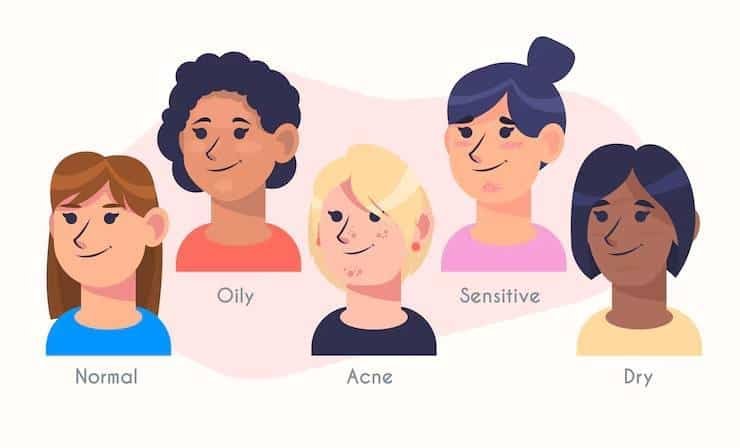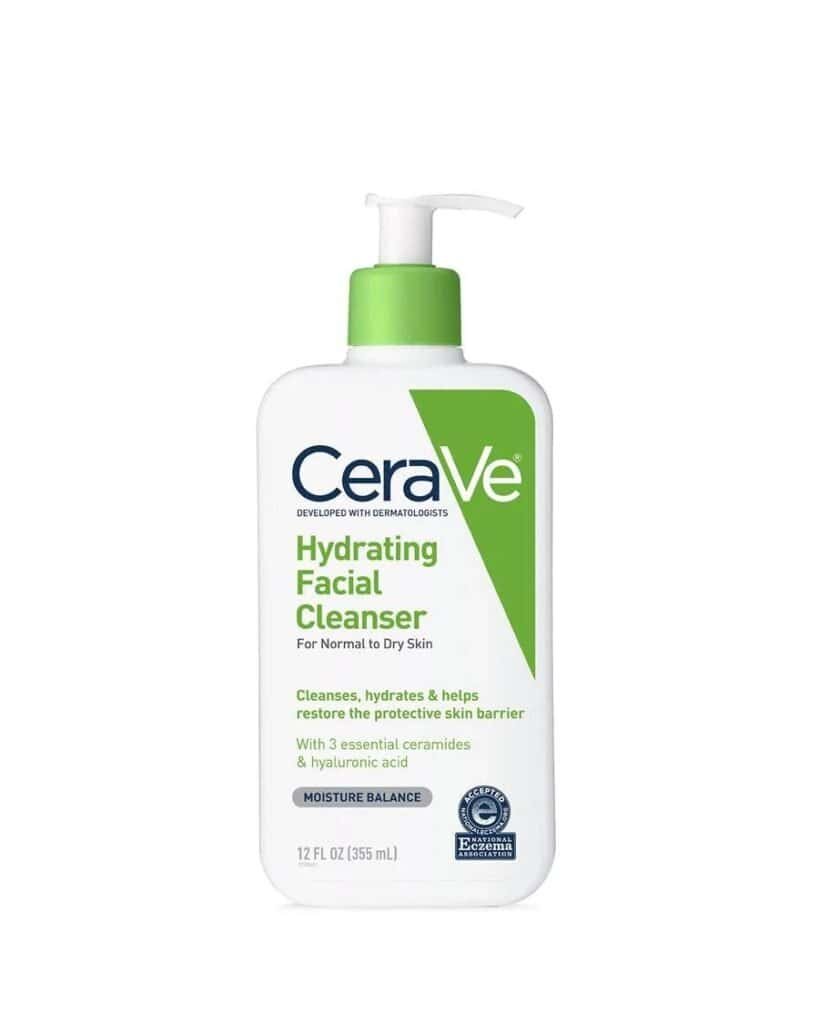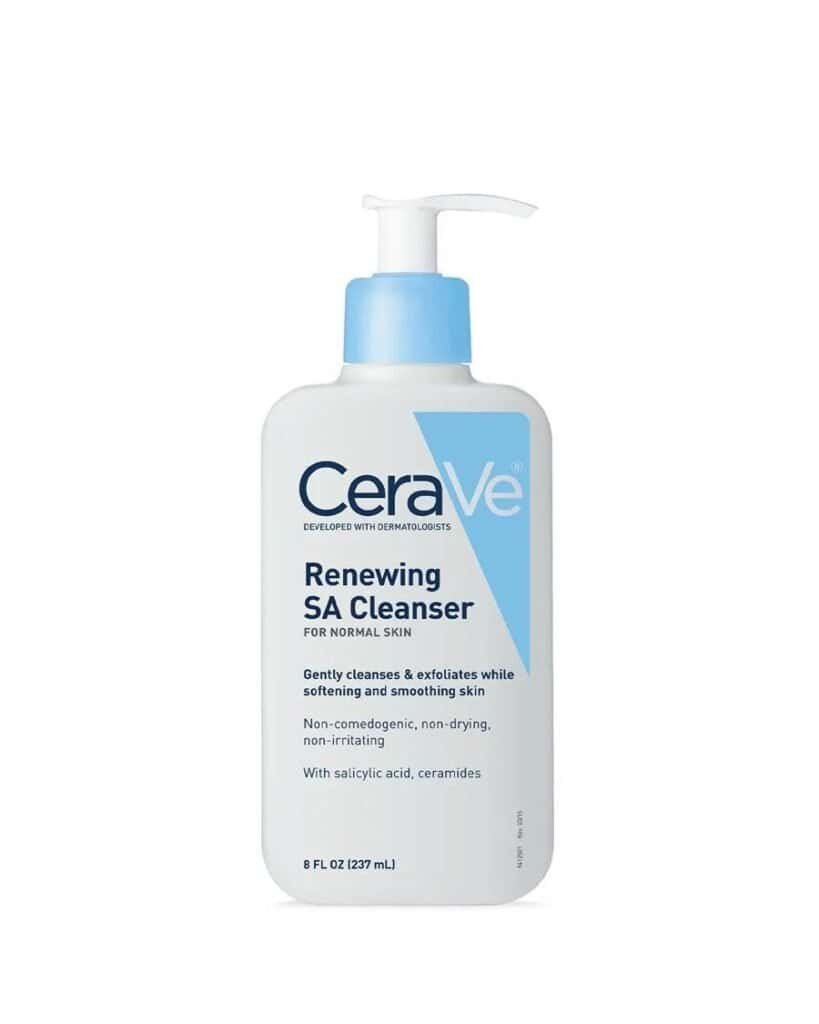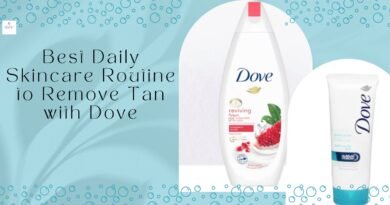How to Test Your Skin Type at Home? Dermatologist Guide
How To Identify Your Skin Type, According To a Dermatologist – Overview: Ever wondered what your skin type really is? I’ve tailored the best research and expert advice from dermatologist Dr. Abby Waldman to help you find out.
Did you know you can figure out your skin type at home in just 30 minutes? Dr.Abby Waldman says All you have to do is wash your face, wait half an hour without applying anything, and see how your skin feels. If it feels tight or flaky, you likely have dry skin. If it looks shiny, that’s oily skin. A mix of both? You probably have combination skin.
Your skin type isn’t set in stone—it can change over time because of things like age, the weather, or even your hormones. So it’s important to check in with your skin once in a while.
If your skin feels rough or gets irritated easily, you might be dealing with dry skin. In that case, go for thick, gentle moisturizers with ingredients like ceramides, hyaluronic acid, or urea to help repair and hydrate your skin.
If your skin feels greasy or you get breakouts often, you probably have oily skin. It can handle stronger ingredients like retinoids or benzoyl peroxide, and it’s best to use lightweight, oil-free moisturizers.
Got an oily T-zone but dry cheeks? That sounds like combination skin. Try using different products for different areas, depending on what your skin needs that day.
Sometimes, what seems like combination skin might actually be something else—like rosacea or seborrheic dermatitis. These need special care, so it’s a good idea to check with a dermatologist.
If you’re unsure what products to use, it’s safest to avoid harsh ingredients like added fragrance or certain preservatives, especially if you have sensitive skin.
The best thing you can do? Pay attention to how your skin reacts, start slow when trying new products, and ask a skincare expert if you need help. Even for natural solution you can check the 5 sensitive skin problems and natural solution. Lets Deep Dive to know about our skin type and what would be the best practises to do.
How Can I Identify My Skin Type at Home – Methods to Check
Knowing your skin type is the first step to building the right skincare routine. Whether you’re dealing with dry skin, oily skin, combination skin, or sensitive skin, an at-home skin type test can help you better understand what your skin really needs. Below there are two dermatologist-approved methods to help you determine your skin type using simple techniques and no fancy tools.
The “Watch and Wait” Method
This is one of the most trusted ways to determine your skin type at home. Start by cleansing your face with a gentle, non-stripping cleanser. Pat your face dry and don’t apply any products—just wait for 30 minutes.
- If your skin feels tight, rough, or flaky, it’s likely dry skin. This means your skin barrier might need support, and you’ll benefit from dry skin care products with ingredients like ceramides, hyaluronic acid, and urea—the best moisturizers for dry skin often include these.
- If your skin becomes shiny, especially on the forehead, nose, and chin (T-zone), you probably have oily skin. This skin type often needs oil control and acne prevention, so look for oily skin treatment options with actives like salicylic acid or benzoyl peroxide.
- If some areas are oily and others dry, you likely have combination skin. In this case, tailor your routine with products suited for each zone of your face.
This simple observation test gives you a clearer picture of your skin’s behavior and helps guide your product choices more effectively.
The Blotting Sheet Method For Fast Results
This quick method is great if you’re short on time but want fast results. After cleansing and waiting for 30 minutes, gently press blotting paper (or a tissue) on different areas of your face.
- If oil appears on all parts of the paper, you have oily skin.
- If little to no oil shows, your skin is probably dry.
- If the blotting sheet picks up oil only from the T-zone but not the cheeks, you’re dealing with combination skin.
- If oil is balanced across your face without dryness or excess shine, you likely have normal skin.
This method is particularly helpful for finding out if you need a skincare routine for oily skin or if you should focus on skin barrier repair using dermatologist-recommended products.
No matter your skin type, always choose skincare ingredients that are right for you. For sensitive skin, opt for sensitive skin products free from fragrance, alcohol, and harsh preservatives.
For a more details about your skin type you can also check the video by DR. Abby Waldman to help you find out.
How To Care for Your Skin Type / Tips and Guide
Once you’ve completed your skin type test, the next step is choosing the right skincare routine. Each skin type has unique needs, and using the right skincare ingredients helps maintain a healthy skin barrier while avoiding breakouts, dryness, or irritation. Below are personalized tips for each skin type, based on dermatologist recommendations and best practices.

Tips for Oily Skin
If your skin feels greasy or shiny throughout the day, you likely have oily skin. Here’s how to care for it:
- Use a gentle foaming cleanser twice daily to remove excess oil and dirt without stripping the skin.
- Choose oil-free, non-comedogenic moisturizers to keep skin hydrated without clogging pores.
- Add active ingredients like salicylic acid, benzoyl peroxide, or niacinamide to help reduce oil and prevent breakouts.
- Use clay masks weekly to control sebum production.
- Don’t skip sunscreen—go for mineral-based, mattifying SPF formulas.
Tips for Dry Skin
If your skin feels tight, rough, or flaky, it’s time for serious dry skin care:
- Use a hydrating, cream-based cleanser that doesn’t disrupt your skin’s natural moisture barrier.
- Look for moisturizers with ceramides, hyaluronic acid, glycerin, or urea—some of the best moisturizers for dry skin.
- Apply moisturizers to damp skin to lock in hydration.
- Limit exfoliation to once a week and avoid alcohol-based toners.
- Repair your skin barrier using occlusive creams like Vaseline or Aquaphor, especially at night.
Tips for Combination Skin
Combination skin means your face has both oily and dry areas—usually an oily T-zone and dry cheeks.
- Use a gentle gel cleanser to balance oil and dryness.
- Apply lightweight lotion moisturizers in oily areas and richer creams in dry zones.
- Use targeted treatments: mattifying serums for the T-zone, and hydrating serums for drier parts.
- Adjust your routine with the seasons—your skin may shift toward oily in summer and dry in winter.
- Don’t rely solely on “combination skin” labels—customization is key.
Tips for Normal Skin
If your skin feels balanced—not too dry or oily—you likely have normal skin. Keep it healthy by:
- Using a mild cleanser to maintain balance without irritation.
- Moisturizing with a lightweight lotion to keep skin soft and smooth.
- Wearing sunscreen daily to protect against sun damage.
- Adding antioxidants like vitamin C for glow and protection.
- Avoiding harsh products that can disrupt your current balance.
Tips for Sensitive Skin
Sensitive skin reacts easily to products, weather, or stress, and needs extra gentle care:
- Use fragrance-free, hypoallergenic cleansers and moisturizers.
- Look for calming ingredients like aloe vera, colloidal oatmeal, and centella asiatica.
- Avoid exfoliating too often and skip products with alcohol or harsh preservatives.
- Do patch tests before using any new product.
- Stick to sensitive skin products that are dermatologist-tested and labeled “gentle.”
Recommended Products – As per Skin Types
Choosing the right cleanser tailored to your skin type is the first step toward building a healthy, effective skincare routine. Below, you’ll find dermatologist-recommended products from top skincare brands like CeraVe, La Roche-Posay, and Neutrogena, each specially formulated for different skin needs—whether you have dry, oily, combination, or sensitive skin.
1. Hydrating Facial Cleanser – CeraVe

Best for: Dry, sensitive, and normal skin
If your skin often feels tight, flaky, or irritated, this is a game-changer. The CeraVe Hydrating Cleanser is rich in ceramides and hyaluronic acid, two powerhouse ingredients for skin barrier repair and moisture retention. It cleans without stripping, making it ideal for dry skin care and sensitive skin products. Fragrance-free, non-foaming, and recommended by dermatologists.
2. Foaming Facial Cleanser – CeraVe / La Roche-Posay

Best for: Oily and combination skin
Struggling with excess oil and occasional breakouts? The CeraVe Foaming Facial Cleanser or La Roche-Posay Effaclar Purifying Foaming Gel gently clean deep into the pores without over-drying your skin. These are top picks for those needing a skincare routine for oily skin or mixed concerns like an oily T-zone. It also Includes niacinamide to calm the skin and control shine
3. Renewing SA Cleanser – CeraVe

Best for: Oily, acne-prone, bumpy, or textured skin
This gentle exfoliating cleanser contains salicylic acid (SA) to unclog pores and smooth out rough patches. Great for keratosis pilaris, post-acne texture, or even mild breakouts. It also has niacinamide and ceramides to avoid over-drying.
4. Acne Foaming Cream Cleanser – CeraVe / Neutrogena

Best for: Oily and acne-prone skin
Formulated with 4% benzoyl peroxide, this cleanser by CeraVe or Neutrogena’s Rapid Clear Stubborn Acne line is perfect for fighting acne-causing bacteria. Its creamy base helps minimize irritation while still being effective—ideal for daily use if you deal with frequent breakouts.
Bonus Tip: Sensitive Skin Picks – Vanicream / Avene
If your skin stings, burns, or turns red easily, try Vanicream Gentle Facial Cleanser or Avene Tolerance Extremely Gentle Cleanser. These are ideal for sensitive skin or those recovering from irritation caused by strong actives.✅ Both brands are fragrance-free, non-comedogenic, and tested for hypersensitive skin.
Frequently Asked Questions
How can I determine my skin type?
If your T-zone is shiny and oily, you have oily skin. Oily in some areas and dry in others means combination skin. Balanced, clear skin is normal. Tightness or flakiness suggests dry skin. Redness or irritation from products likely means sensitive skin.
What are the main characteristics of each skin type?
- Oily Skin: Shiny appearance, enlarged pores, prone to acne and blackheads.
- Dry Skin: Flaky, rough texture, tight feeling, may have dullness.
- Combination Skin: Oily in the T-zone, dry or normal in other areas.
- Normal Skin: Balanced oil and moisture, smooth texture, few imperfections.
- Sensitive Skin: Easily irritated, redness, itching, may sting with some products.
What is combination skin, and how do I manage it?
Combination skin means your face has different skin types in different areas — typically oily on the forehead, nose, and chin (the T-zone) and dry or normal on the cheeks. To manage it:
- Use a gentle cleanser suitable for all skin types.
- Apply lightweight moisturizer on oily areas and richer moisturizer on dry patches.
- Use targeted treatments to address specific concerns, like mattifying products for oily zones.
- Always use sunscreen suitable for combination skin.
Why is it important to identify my skin type?
Knowing your skin type helps you choose the right products and skincare routine. Using unsuitable products can cause problems like dryness, irritation, or excess oil. When you tailor your routine to your skin type, your skin stays healthy, balanced, and looks its best.
Can my skin type change over time?
Yes, your skin type can change due to factors like age, weather, diet, hormones, and lifestyle. For example, skin often becomes drier as you age, or more oily during puberty. It’s good to reassess your skin type regularly and adjust your skincare routine accordingly.
How many skin types are there?
There are generally five common skin types:
- Normal
- Oily
- Dry
- Combination
- Sensitive
Thus, Each type has unique needs, so understanding yours is the first step to healthy skin. If you find any issue with your skin then seek near dermacologist. Stay safe and Glow Naturally !



